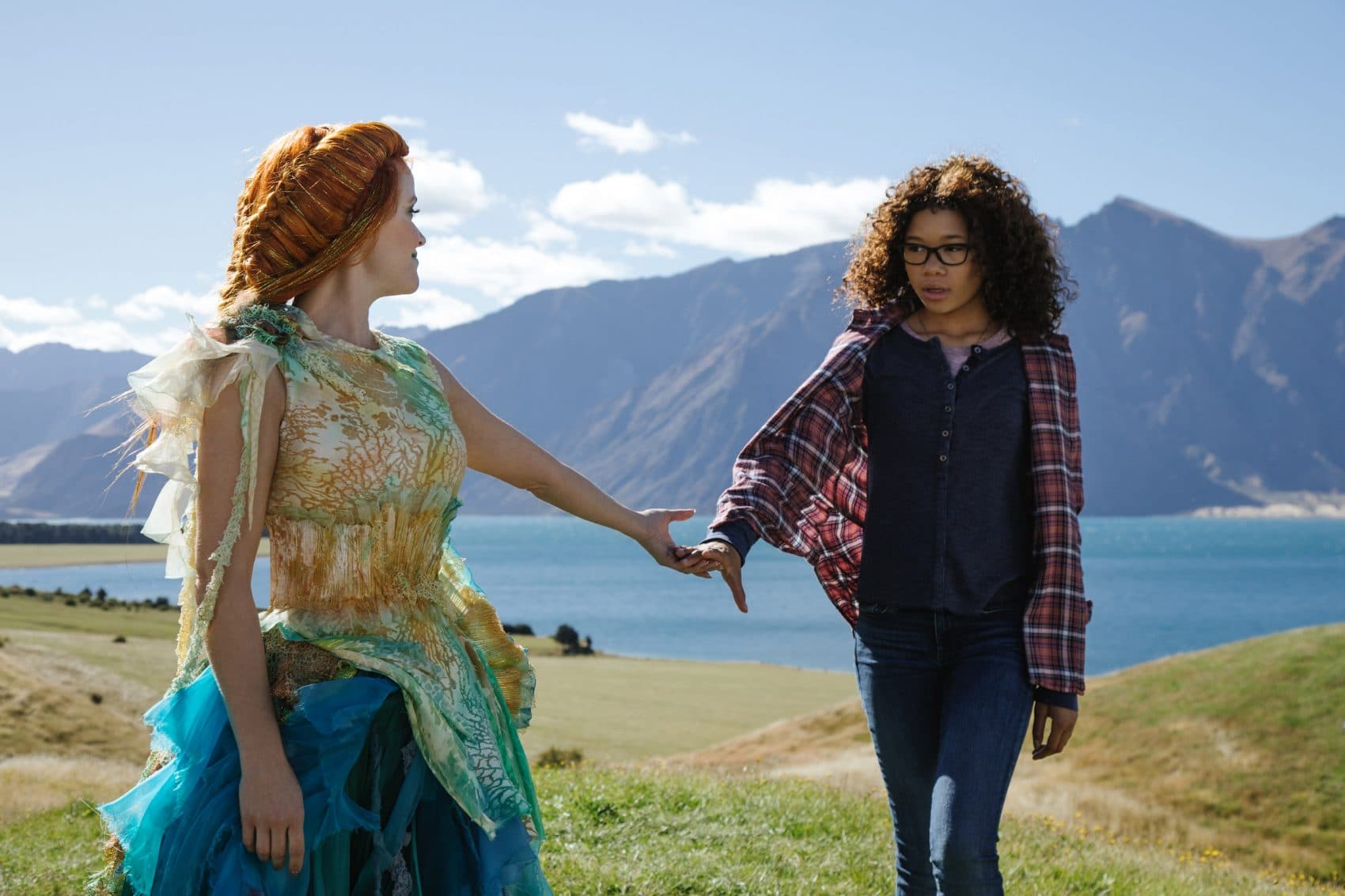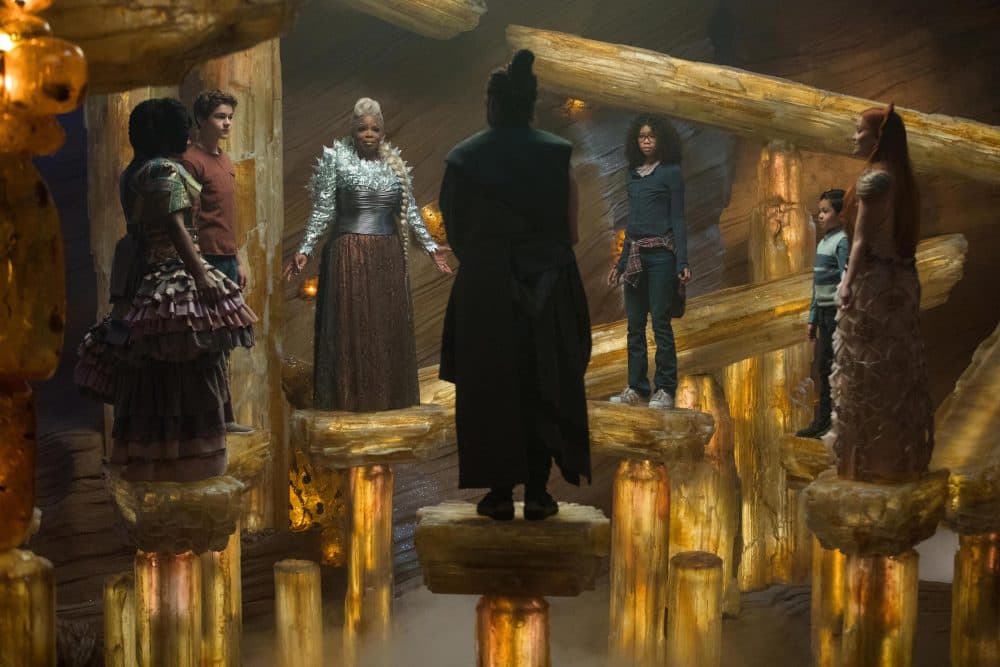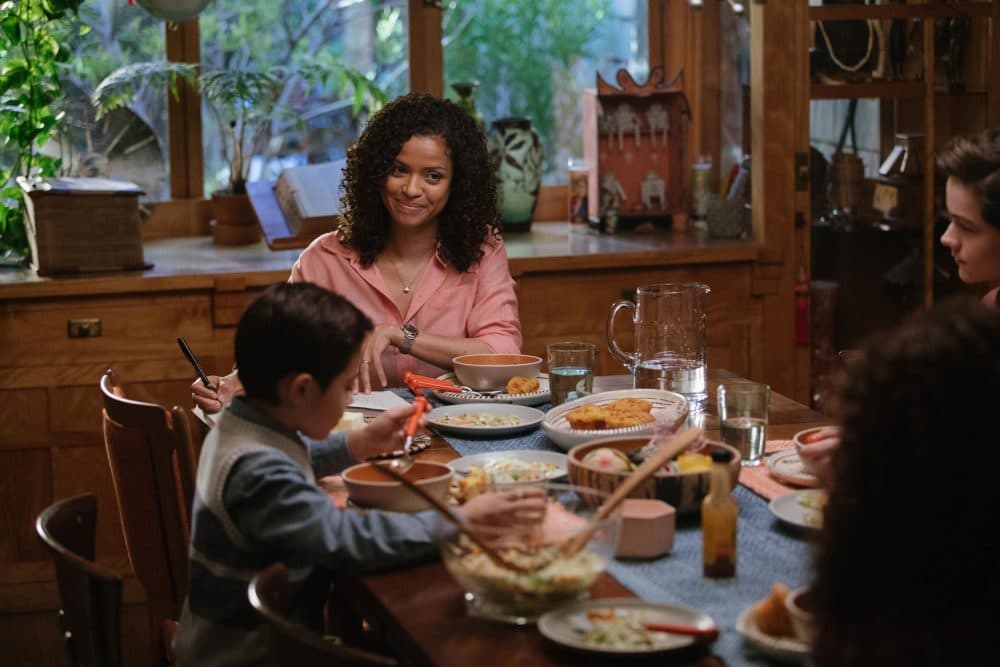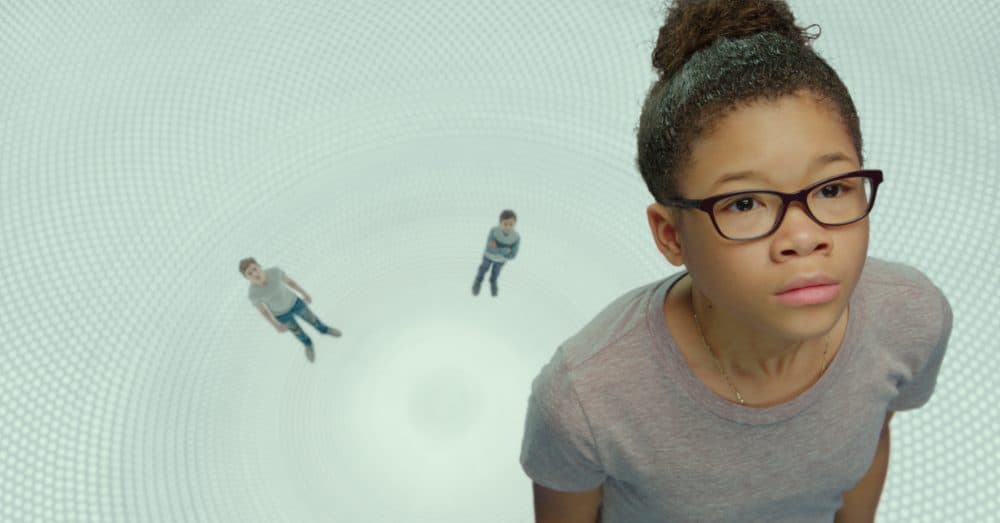Advertisement
Commentary
Ava DuVernay's 'A Wrinkle In Time' Destroyed My Childhood Fantasies, But I'm Still Glad I Saw It

It seems right that “A Wrinkle in Time,” Madeleine L’Engle’s cosmic coming-of-age tale, begins in a young girl’s bedroom. That is, after all, the site of discovery for so many of the book’s fans. It was in that mundane setting that 13-year-old Meg Murry’s interstellar adventure started, and my own.
I recently had occasion to reread “A Wrinkle in Time,” two decades after I first encountered it as a child. The novel opens in the protagonist’s attic bedroom as a storm rages outside. In a few deft strokes L’Engle infuses what might otherwise be a picturesque rural New England setting with dark portent: “Behind the trees clouds scudded frantically across the sky. Every few moments the moon ripped through them, creating wraithlike shadows that raced across the ground.” It had been more than 20 years since I last read those sentences, but they were as familiar and captivating as ever. “Scudded” — the word registered with a jolt of delight, as if I were discovering it again for the first time.
“A Wrinkle In Time” was published in 1962, the first installment in L’Engle’s excellent Time Quintet. The story concerns young Meg Murry, a scrappy misfit who is always in trouble at school, and her 5-year-old brother Charles Wallace, a child prodigy with telepathic abilities. They live with their twin brothers and mother, a microbiologist. Their father, a physicist who works for the government, has been missing for many years. It is in search of him that Meg, Charles Wallace, their friend Calvin and three supernatural beings named Mrs. Whatsit, Mrs. Who and Mrs. Which embark on an intergalactic journey via a form of instantaneous space and time travel called a "tesseract," which brings them into conflict with an evil tyrannical being called IT.

Since Ava DuVernay’s film adaptation of “A Wrinkle In Time” opened last week, critics have mainly fallen into two camps: the nitpicky grownups who rightly recognize it as an imperfect movie, and the open-minded adults who acknowledge the film’s faults but entreat us to enjoy it anyway, because there is value in its earnestness and its imagination and its themes. Children, it bears pointing out, do not get to be critics, so nobody knows what they think about a movie that is supposedly aimed at them.
Like the book, the film takes as one of its core principles a defense of difference, and it offers some tantalizing updates. Where the Murry clan of L’Engle’s novel is, implicitly, white, DuVernay imagines the Murrys as an interracial family comprised of a black mother, a white father, one biological daughter and an adopted son. When the cast of “A Wrinkle In Time” was first announced, I was interested to see how the story’s racial dynamics might play out in the (presumably) white world of L’Engle’s original New England setting. DuVernay’s decision, instead, to set the film in Los Angeles provides its own unexpected pleasures. Rarely do we see background actors represented in as many shades of brown.

This, along with the casting of Reese Witherspoon, Mindy Kaling and Oprah Winfrey as the trio of galactic guardian angels, offers a pointed critique of literature and film’s unwaveringly white gaze, and the ways which our own biases are shaped by it. Though L’Engle never describes Mrs. Whatsit, Mrs. Who and Mrs. Which in terms of race, I know I can’t be the only person who pictured them as white. And for good reason — two decades ago, when I was a young reader, people of color made up only 9 percent of children’s book characters; today, that number lingers at a measly 22 percent. Even as we are willing to accept a fictional universe in which intergalactic space travel is possible to trigger with a mere thought, our own imaginations can still fall woefully short.
But the reverse can be true as well. When Oprah first materialized as the ancient Mrs. Which, I cringed — the looming CGI apparition embarrassed in its eagerness to inspire wonderment. Such was the case in almost every instance of computer-generated spectacle, save for the physics-defying mountains of Uriel, rendered in vertiginous, breathtaking splendor. After that it was mostly downhill; by envisioning the planet Camazotz as a surreal, shape-shifting dreamscape, the filmmakers were able to justify all manner of green screen shenanigans, the most egregious of which was the appearance of a huge, malevolent cyclone that effectively got the heart rate up but served little narrative purpose. The story’s central villain, originally written as a giant, pulsating brain that controls people’s minds, was invoked on-screen as a massive tentacular being, which was somehow a lot less scary than a disembodied head.
Advertisement
None of this should come as a surprise. Caught up in the book’s magnificent milieu, it’s easy to forget that most of its conflict unfolds interiorly. The climactic showdown between Meg and IT is a battle of wills, and it takes place almost entirely inside Meg’s mind: “The red miasma swam before her eyes; her stomach churned in ITs rhythm. Her body trembled with the strength of her hatred and the strength of IT.” In casting about for some way to manifest this on the big screen, it’s no wonder the filmmakers wound up with a big floating octopus.

The experience of seeing a beloved childhood book brought to life is always, at its core, a kind of betrayal. It is in that moment that we become bereft of a certain special intimacy we had previously enjoyed with a world we’d summoned up in our heads — one that never unfolds on screen exactly as we had imagined. It is difficult not to resent a movie for precipitating this loss, even as we enter into the contract willingly.
But it is a gift as well. For me, “A Wrinkle in Time” was the start of a lifelong love of science fiction and an enduring appreciation for L’Engle’s incandescent prose. She was able to conjure the impossible in ways that perhaps a film never could. But a movie like DuVernay's has a way of laying bare our assumptions about the world the author conceived. Watching it, I was enchanted by things I had never before imagined, and in awe of the things only I could ever see.
